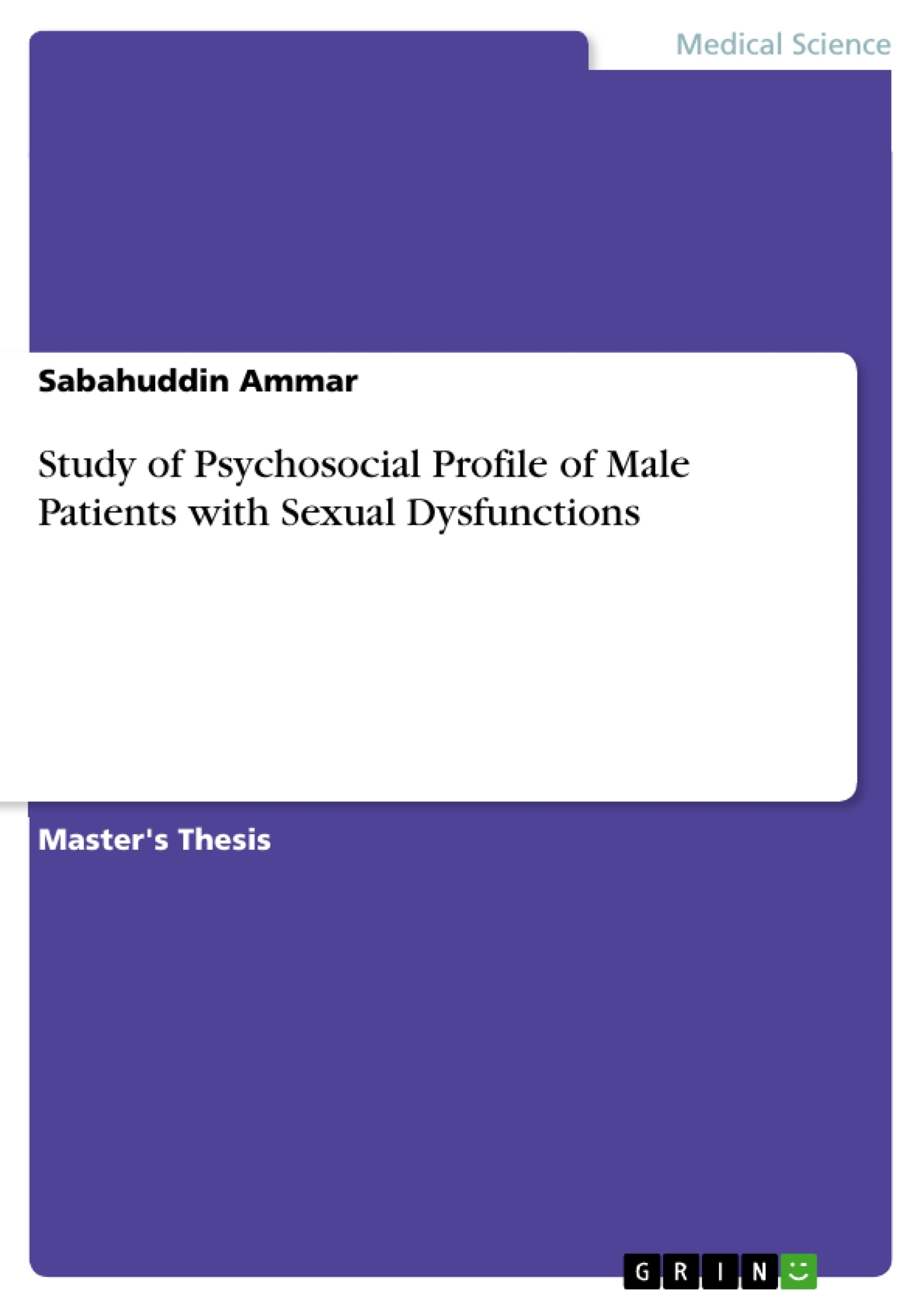The study was conducted in the department of Psychiatry,Jawaharlal Nehru Medical College and Hospital, Aligarh Muslim University, Aligarh. This study was a cross sectional study and included 100 male consecutive subjects seeking treatment for their psychosexual problems fulfilling inclusion and exclusion criteria. The study was approved by Institutional Ethics Committee.
The aim of this study was to study psychosocial profile, relation of male sexual dysfunction with lifeevents and to study psychiatric comorbidity in male patientspresenting with sexual dysfunction. DSM-5 was used to make the diagnosis of sexual dysfunctions and psychiatric disorders.Arizona sexual experience scale (ASEX) male version was applied to assess sexual dysfunction. The patients were also evaluated for Stressful life events using a Presumptive Stressful life events scale.
Of the various psychosexual disorders observed in our study, PME was most commonly reported (33%), followed by erectile dysfunction (ED) in 32% subjects, combination of PME and ED in 24% subjects, Performance anxiety (8%), HSDD(2%) and Pain Disorder (1%). Mean age of the participant was found to be 31.32 ± 9.49.Subjects in age group (18–30 years) suffered more from PME, age group (31-40 years) reported combination of PME and ED (34.38%) as most common wherein ED (54.54%) found to be the most common sexual disorder in the participants of age group (41-50 years). Most of the participants in this study were married (75%), educated (88%), employed (91%), Hindu (59%), of middle (48%) and higher (32%) socioeconomic group, living in joint family (49%) and belonging to Rural area (55%). Mean stressful life event in the subjects was 5.94 ± 2.03.
LIMITATIONS
1. The sample size of the study is small.
2. The study is cross sectional study.
3. This study is only limited to Male Sexual Dysfunction.
4. It is a hospital based study.
FUTURE DIRECTIONS
1. A study with larger sample size should be planned.
2. The study should be multi-centred and patient should be selected from different cultural background.
3. There are various misconception and stigma regarding sex and sexuality. It should also be incorporated in the study.
Inhaltsverzeichnis (Table of Contents)
- Introduction
- Aims and Objectives
Zielsetzung und Themenschwerpunkte (Objectives and Key Themes)
This study aims to contribute to India's sexuality research by examining the psychosocial profile of male patients presenting with sexual dysfunction. It will explore the relationship between sexual dysfunction and life events, as well as the prevalence of psychiatric co-morbidity in this population.
- Psychosocial profile of male patients with sexual dysfunction
- Relationship between sexual dysfunction and life events
- Psychiatric co-morbidity in male patients with sexual dysfunction
- Cultural and societal influences on men's sexual health in India
- The role of alternative medicine and traditional practices in addressing sexual dysfunction
Zusammenfassung der Kapitel (Chapter Summaries)
- Introduction: This chapter provides a comprehensive overview of sexual dysfunctions, their prevalence, and the factors that contribute to their development. It highlights the dearth of sexuality research in India and the cultural taboos surrounding sexual health. The chapter also emphasizes the impact of sexual dysfunction on quality of life and the need for further research in this area.
Schlüsselwörter (Keywords)
This study focuses on sexual dysfunction in men, exploring the psychosocial factors, life events, and psychiatric co-morbidities associated with this condition. It delves into the cultural context of sexual health in India, considering the influence of traditional practices and beliefs. The study will also examine the relationship between psychological impairment and erectile dysfunction, emphasizing the need for further research in this area.
- Quote paper
- Sabahuddin Ammar (Author), 2019, Study of Psychosocial Profile of Male Patients with Sexual Dysfunctions, Munich, GRIN Verlag, https://www.grin.com/document/923244



